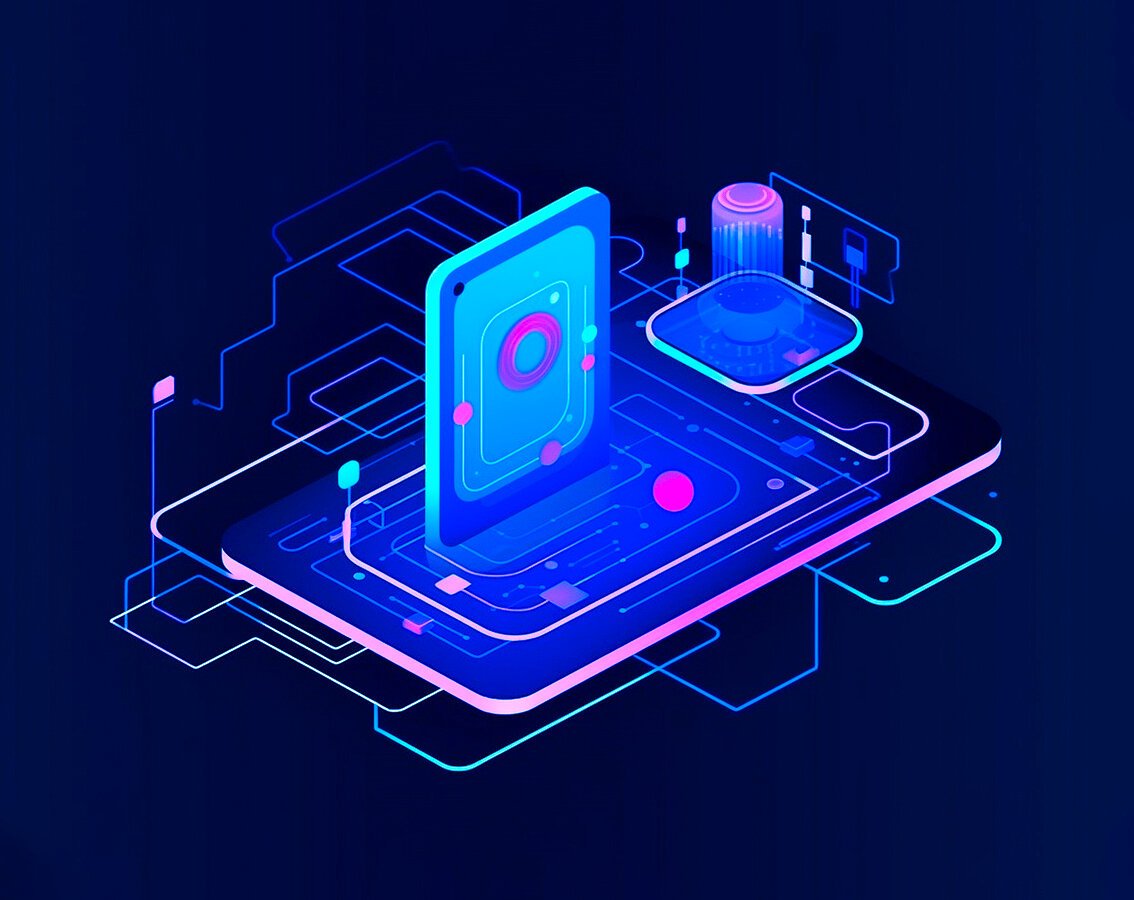blog
Hyperconnected Workplace 101: Essential Components to Know
By Mohan S Culture Enterprise Mobility Digital transformation May 30, 2023

Hyperconnected workplaces give team members the ability to collaborate with one another with the use of digital tools and devices and are an important component of the future of work. Thanks to the development of modern technology and digital communication, both companies and employees profit from working in these environments.
Regardless of where they are physically located, employees may easily connect and collaborate on projects in real-time with the help of digital tools like video conferencing, instant messaging, and cloud-based file sharing. Because of their improved ability to collaborate, teams may complete projects more quickly and with greater productivity.
According to Grand View Research, “the global hyperconnectivity market size was valued at USD 331.7 billion in 2021 and is expected to expand at a compound annual growth rate (CAGR) of 20.3% from 2022 to 2030.”
Highly networked workplaces might help organizations save money. Employers can cut back on the requirement for office space and related costs like utilities and office supplies by allowing remote work. Digital communication tools can also lessen the need for travel, which can minimize the cost of lodging and travel.
Components of a Hyperconnected Workplace
In the United States alone, the population of mobile workers is forecast to increase from 78.5 million in 2020 to 93.5 million by 2024.
During the COVID-19 pandemic, many businesses encouraged mobile work. Businesses were able to continue operating during the disaster by shifting to remote labor. However, a fully functioning, hyperconnected workplace requires some important considerations. Organizations may need to consider the following when creating a hyperconnected workforce:
Mobile workforce collaboration
A mobile workforce is a group of employees that are not restricted to a physical workplace and may operate from any location. Using digital devices like laptops, cellphones, and tablets.
Would you like to explore how employee apps can boost productivity?
Flexibility and productivity are two significant benefits of working remotely. The ability for employees to work from anywhere at any time can enhance work-life balance and cut down on travel time and costs. Employees can also utilize tools and programs that they are accustomed to using, which can boost productivity and efficiency. The Bring Your Own Device (BYOD) and Bring Your Own Application (BYOA) programs encourage employees to utilize their own personal devices and applications for work-related tasks, enabling this type of workforce.
A mobile workforce needs a variety of technologies to operate effectively and securely.
Technologies needed by a mobile workforce to function efficiently:
Software for managing mobile devices (MDM): MDM software enables organizations to protect and control employee-owned devices, ensuring that they adhere to company standards and policies.
Software for a virtual private network (VPN): VPN software establishes a secure link between employee devices and corporate networks, allowing for secure remote access to resources and applications.
Collaboration tools: Employees may interact and collaborate in real-time regardless of where they are physically located thanks to collaboration tools like video conferencing, instant messaging, and cloud-based file sharing.
Cloud-based software: Employees may access crucial information and resources from any location, without the need for physical copies or in-person meetings, thanks to cloud-based software like customer relationship management (CRM) and enterprise resource planning (ERP) systems.
Cybersecurity tools: Cybersecurity technologies are crucial for protecting staff devices and corporate networks from online attacks. Examples include firewalls, antivirus software, and intrusion detection systems.
IoT-Aided Field Workforce Management
IoT devices can be useful for automating procedures, increasing productivity, and facilitating human-machine interaction in a hyperconnected workplace. The term "Internet of Things" (IoT) describes a network of gadgets, items, and sensors that are linked to the internet and are capable of exchanging data.
IoT devices are extremely beneficial in field workforce management (FWM). FWM entails overseeing a group of employees that frequently operate in the field or remotely as salespeople, delivery drivers, or service technicians. Here’s what IoT devices bring to
Better tracking of employee activity and location: The most difficult aspect of FWM is locating and monitoring employees' activities. Employers can monitor employee location and productivity with the use of IoT devices like GPS trackers. This can increase productivity and lower the chance that workers will waste time or resources.
Improved inventory management: Inventory and equipment management in FWM present another difficulty. Employers may control stock levels and proactively plan maintenance and repairs by using IoT devices like sensors and RFID tags to track inventory and equipment in real-time.
Increased employee communication: IoT devices can also facilitate better communication between office and field personnel. For instance, employees may be able to receive real-time instructions and information from coworkers without the need for calls or emails thanks to wearable technology like smart glasses.
Communication and collaboration
Effective teamwork and communication are essential for accomplishing company goals and objectives in today's hyperconnected workplace. Team collaboration is the process of cooperating to achieve a common objective, frequently involving the sharing of knowledge, ideas, and feedback.
Would you like to read: The Hottest New Title in Tech: Head of Remote Work
Improved productivity is one of the main advantages of team collaboration. Employees can execute jobs more quickly and effectively when they collaborate and share their knowledge and abilities. Decision-making can benefit from collaboration since diverse viewpoints and ideas are taken into account.
Employees can now access information and resources from any location without requiring physical copies or in-person meetings, thanks to cloud computing. This can provide flexibility and make it possible for workers to complete work from home or while on the go without compromising quality. In a hyperconnected workplace, cloud technology can be crucial to promoting team communication. Employees can share information and work on projects in real-time regardless of where they are thanks to cloud-based collaboration applications like Google Drive, Microsoft Teams, and Slack. This can enhance communication and lessen the possibility of misunderstandings or delays.
A further advantage of cloud computing is enhanced data backup and security. To secure sensitive data, cloud-based collaboration platforms frequently have built-in security measures like two-factor authentication and encryption. Furthermore, data is frequently automatically backed up, lowering the possibility of data loss due to device failure or other problems.
Data security
Cyberattacks can have serious repercussions for enterprises, including data loss, monetary losses, and reputational harm. As a result, it is crucial that organizations take action to shield their data from cyberattacks and prevent them.
In a hyperconnected workplace, data security is essential, especially when there is a highly mobile workforce. Because they are frequently used to access business data and systems, mobile devices like laptops, smartphones, and tablets are at risk of hacker assaults and data breaches.
Strong password policy: Strong password policies are one way that corporations may stop intrusions. Strong, distinct passwords should be used by employees for all of their accounts, and they should be changed frequently. In order to access company data and systems, users must first present two or more forms of identity. This practice is known as multi-factor authentication.
Employee education and training: The education and training of employees is another method for preventing cyberattacks. Workers should receive training on data security best practices, including how to spot and avoid phishing schemes and how to use workplace devices and networks safely.
Use of firewalls and encryption: To safeguard their data from hackers, businesses can also put in place security measures like firewalls, antivirus software, and encryption. Access to sensitive information should be limited to authorized individuals only, and data should be encrypted both at rest and while in transit.
Frequent security audits: Businesses can detect possible vulnerabilities and fix them before they are used by cybercriminals by conducting regular security audits and assessments.
Response strategy: Businesses must have a response strategy in place in case of a data breach or cyberattack to lessen the effects and recover from the attack as quickly as possible.

Conclusion
A hyperconnected workplace has the potential to alter how we work and interact. It's critical to strike a balance between the advantages of technology and the need for security. It's also crucial to make sure that data security, privacy, and ethics aren't compromised in the hyperconnected workplace. Companies must put in place robust cybersecurity safeguards, create rules and policies that encourage ethical technology use, and educate staff on digital security and literacy.
We may anticipate more developments in communication technology as we head towards a more hyperconnected future, including 5G networks, cloud computing, and the Internet of Things (IoT). We will be able to work remotely, collaborate easily, and get immediate access to information and resources thanks to these technologies.
The future is hyperconnected. Organizations that embrace this trend and make the appropriate investments in infrastructure, equipment, and human capital will be well-positioned to prosper in the years to come.



